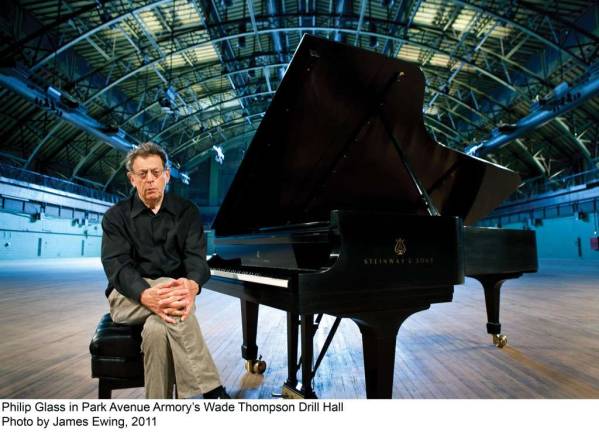Park Avenue's Secret Downtown Venue

For an uptown venue, the Park Avenue Armory has plenty of downtown spirit.
"Our sense is really contemporary and cutting edge, and in this historic building it seems to work really well," said Rebecca Robertson, the president and executive producer of the space, located at 643 Park Ave., between 66th and 67th streets. She's discussing the upcoming Tune-In Music Festival, which runs Feb. 23?26 and honors avant-garde composer Philip Glass.
The four-day festival, which will feature a world premiere of an Armory commission, a version of Allen Ginsberg's Kaddish by Hal Wilner, Bill Frisell and Ralph Steadman, also includes Glass' own Music in Twelve Parts, a concert featuring Glass and Patti Smith and a closing-day performance featuring composers Nico Muhly and Tania Leon, the jazz fusion group Tirtha and Glass' son, the singer-songwriter Zack Glass.
According to Robertson, the festival is a prime example of the Armory bringing inventive programming to its 250,000-square-foot space.
"I think we are very Alphabet City," she said, referring to the eastern stretch of the East Village where artists have long congregated and alternative spaces abound. "Philip Glass' roots are Downtown. This has a Downtown, slightly hippie and very loving and spiritual sense. That is what this is all about."
As far as Robertson's concerned, it's precisely what the 220-year-old space should be doing.
"We took over the Armory to turn it into a cultural institution," she explained. "The whole idea was to use the drill hall and the rooms for work in all the art forms-visual and performing-that needed a nontraditional space. New York has such a wealth of single-purpose halls, it really needs one very large, unusual space."
It's not just talk. When the Armory hosted the first Tune-In Festival in 2011, it featured a commission by experimental immersive symphony Sympho, two concerts with new music impresarios eighth blackbird and the first-ever indoor performance of John Luther Adams' Inuksuit, which involved more than 70 percussionists who moved throughout the Armory's drill hall during the performance.
"Our first few years of production were really many collaborations with other institutions, like Lincoln Center, the Art Production Fund and the Whitney Biennial, to find out how the art forms responded to this rather flee-floating platform," Robertson said. "We didn't know how music would turn out; the Armory opened in 1881 with a huge concert of various philharmonics from the New York area. They obviously thought about music when they first built the drill hall, but you know, it's a big space."
The space's first big test as a performance venue came during its premiere collaboration, a 2008 performance of Stravinsky's Sacred Masterpieces. Critics would be inside the building hearing live music for the first time in years and, according to Robertson, "we were on pins and needles, not knowing how it would sound."
Luckily, everything went well and the critics walked away pleased. It was an important acknowledgement for a venue that possesses both the good and bad aspects of not being your average concert hall.
"We think that for music, it's a really interesting place," Robertson said. "It's different to play here and it's different to listen to music here. Of course, it feels like you're outside-and we've done pieces that were written for the outside. There is a longer reverb time. There is a different sensation here, but I think it's interesting."
She's not the only one. Glass, along with consulting artistic director Kristy Edmunds, has played a major role in planning the festival in his honor.
"It's his 75th birthday and he and Kristy cooked this up together because it was a festival that reflected his own sensibilities and the things he loves," Robertson said. "Some of the pieces are by him, some are because of him. It's more about a gestalt that suits the way he thinks, the people he's mentored, the people who have inspired him and the things that have been important in his life."
The way Robertson sees it, there's nothing anachronistic about having the poems of Ginsberg performed-with original projections and live music, of course-the same weekend that emerging artists take over the stage and a punk-rock icon gives a concert, all on the most exclusive avenue in the world.
In fact, the mixture of exciting, emerging culture and a spacious, beautiful venue is just what she's aiming for. "Our sense is really contemporary and cutting edge," she said, "and in this historic building, it seems to work really well."